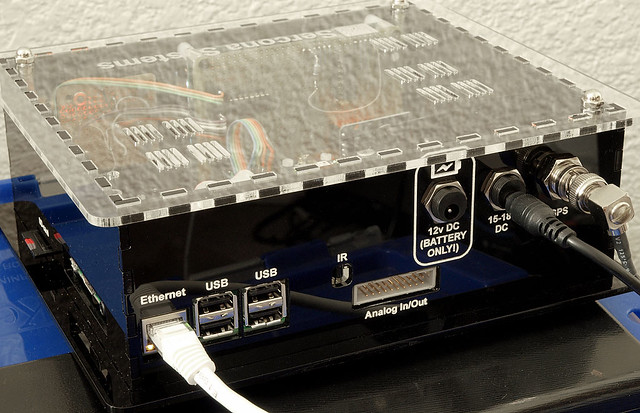my take is to use laser-cut plastic panels and to etch in the lettering. some like to etch the lettering on the front of the panel (I do) while others like to reverse-image the text and print it behind semi-transparent plastic, thus protecting the letters that were etched.
I infill my lettering. I will set the laser cutter power somewhat high, make a few passes and even raise the laser bed up a bit and repeat the raster operation to burn the letters into the plastic.
leave the mask paper on the plastic as you cut.
blow out the debris from the raster cut lettering. then, my secret method is to take acrylic white paint, dab some over the lettering and let it seep inside the voids. PUSH it into the voids with a rubber glove/finger (works best for me). the paint I use is somewhat heavy and wants to bubble so I press and force it into the voids. let it dry for 5 minutes and peel the masking paper off (the stuff that comes on plexiglass). that masking helps you avoid getting the paint on the plastic where there is no lettering.
final process is also manual; while its still drying, you can use your finger nail to flick-off any over-run paint or messy areas. ungloved hands work well here as you can wipe across the plastic with your fingers, pick up surface paint while leaving the paint into the voids. hard to explain but if you try it, you'll 'get it'.
the main secret is to FORCE the paint into the voids by pressing down, not just letting gravity work. gravity causes bubbles in thick paint, but pressing the paint with fingers works well for me.
here's what my panels can look like once that process is done:


even 'graphics' like my battery icon or the round boxes that group ports or buttons together, visually, can be done this way.
note, this process works really well if you use the shiny plexiglass. if you use matte style, its much harder since overspill on the non-smooth surface is nearly impossible to fully clean up after. the shiny plastic surfaces does not want to hold onto the paint and so you can remove it with your fingers (like a sponge) or fingernail (rub fingernail over lettering slightly, so that any paint NOT in the void gets flicked off near the edges of the letters).
long post - but hope it helped give some new ideas on how to cheaply do panel labeling. and since its in-filled ink, it does not rub off. holds up pretty well, in fact.